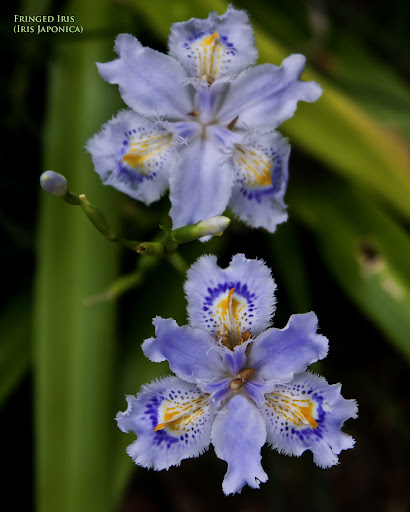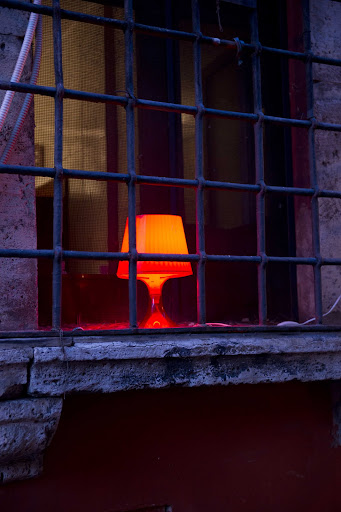Exploring the Classical World with Photographer Robert Consoli
Are you absolutely in love with the classical world? Can't get enough of Mary Renault, Blue Guides, reading about Italy, Greece, and more? I've found an extraordinary resource to share with our Wandering Educators - and true to internet fashion, it's a web of intelligent writing and photography. Writer and photographer Robert Consoli is adept at sharing his experiences in Europe - and has such an eye that we feel as if we are Right There, with him. I delve into his work - books, websites - and stay, entranced.

Side aisle chapel in the abbey church of Le Thoronet in the south of France (Var province). It is from SquinchPix. You can search on 'Le Thoronet'.
We had a chance to sit down and talk with Robert, about his art, photography tips, travel writing, and more. Here's what he had to say...
WE: Please tell us about your art...
RC: Since I was a boy I wanted to do two things... travel in Europe and take photographs. Now I'm able to combine those two interests by creating photo web sites about European art. S. and I have been fortunate to be able to take one or two trips to Europe every year for the last seven or eight years.
I divide my work into documentary and artistic production. The documentary photos provide examples of European art and architecture in a large number of categories; they're found on squinchpix.com. The art production is on my blog, RHC, at robertconsoli.blogspot.com. Squinchpix was inspired by a wonderful web master: Mary Sullivan, a professor of Architecture at Bluffton College. For at least 10 years she's been putting out photos in her Digital Imaging Project web site; she started by scanning her negatives and putting those on line. I've tried to improve on Mary's work in certain ways but I still have a long way to go.

These are pictures from the Gardens of the Villa Ephrussi in Saint-Jean-Cap-Ferrat in the south of France. It's from my blog, 'RHC'. You can also search on 'Ephrussi' on SquinchPix to see all the Ephrussi pictures.

WE: How/when did you start becoming an artist?
RC: It was when I first began to develop an interest in photography. From the first I wanted to do pictures that showed textures and contrasts. This arose out of the fact that I grew up in Hawaii - a very beautiful place and compulsively photographable. At first I had almost no money (and photography was more expensive in those days) so I had to make every single shot count. I can still remember some of the first shots on that very first color roll and that was an awfully long time ago. I can't really remember 'becoming' an artist. Skill and perception grow gradually with hard work. For fifteen years I just painted and there's a saying among painters: “You want to paint? Fine, but you need talent. A talent for working.”

Portrait of the artist.
WE: What would you tell any amateur photographer?
RC: I would say that the best thing that could happen to you would be to find a project that requires you to take literally thousands of photographs. And post-process every one of them. Eventually you'll actually learn how to do it. Most photographers (amateurs, I mean) could improve their photography qualitatively by simply mastering the post-processing part of digital photography without buying any more equipment, ever. Master Photoshop, Elements, Lightroom, GIMP (which is free) … whatever it is that you use. That will make the biggest difference. This will give you the ability to move your photographs from where they are when they come out of the camera to the place that you want them to be. And I guarantee that when they do come out of the camera they're not where you want them to be. Clicking the shutter is only the start of the process, not the conclusion.
Also it's important to look at other people's photographs. Look at all the master photographers that you can find and which appeal to you. Really look at them. And then look for those opportunities in your everyday life. Eventually you'll see as they did ... you may see cliches at first, but at least you'll be seeing like a photographer.

This is a demi-lune fortification from the Fortress of Salses in the far south of France. It is from SquinchPix

This is a chapter header page from my new book on Filoli gardens in California.
WE: You're also a writer, Bob. Why do you write?
RC: All art begins with discomfort and a need to ease it. I write with my heart on my sleeve as you could probably see in 'Listening to Mariah Carey in Florence'. I despise most modern fiction as grossly violent, prurient, or mostly uninvolved and uninteresting. I think that the average American has this reaction also. That's why 'modern fiction' by all the best authors sells tens of copies while 'Bridges of Madison County' and 'The Da Vinci Code' sell in the tens of millions. Writing is song and that's especially true of prose. You cannot write prose until you can sing. Some people think that my writing is mawkish or sentimental or even religious. But, however it strikes the reader, it was genuine when it left me. In 'Where are La Signora's Shoes' I was basically in shock with worry about S. during that whole twelve-hour period and this story came out of my need to re-establish order and make sense of things. 'Listening to Mariah Carey in Florence' took its origin from a nightmare. That's why I write.

The location is Vinyes-Mortes, a neolithic burial ground in NE Spain, in Catalonia, from the 35 century BC. It's at 42.329762 N, 3.133675 E if you have Google Earth.
WE: How can people find your art?
RC: My writing is at travellers-journal.com and also versions of these stories are at Open Salon under the name 'crconsol'. A book of photographs which I took in Trastevere, Rome, last year is here: http://www.blurb.com/my/book/detail/1705143 . And, of course, my primary site: www.squinchpix.com which now has nearly 15,000 photographs. The photos are all tagged so that you should be able to find what you want and you can use them for free. I only ask that anyone who does credit Robert H. Consoli or squinchpix.com. And drop me an e-mail; I always want to hear from fans of the site. And people might care to look at my actual blog, RHC, which is at robertconsoli.blogspot.com.
And, Jessie, thanks for the work you do with WanderingEducators.com and thanks for the exposure.

This is from my Trastevere book, 'Trastevere at Night', which is on Blurb
WE: Thanks so very much, Bob! I love your work and highly recommend it to our Wandering Educators.
feature photo:
from Robert's Trastevere book, 'Trastevere at Night', which is on Blurb
All photos courtesy and copyright Robert Consoli.
-

- Log in to post comments



















